Now
$139.99
14-day Free Trial
Requires account.
Cenozoix Compressor

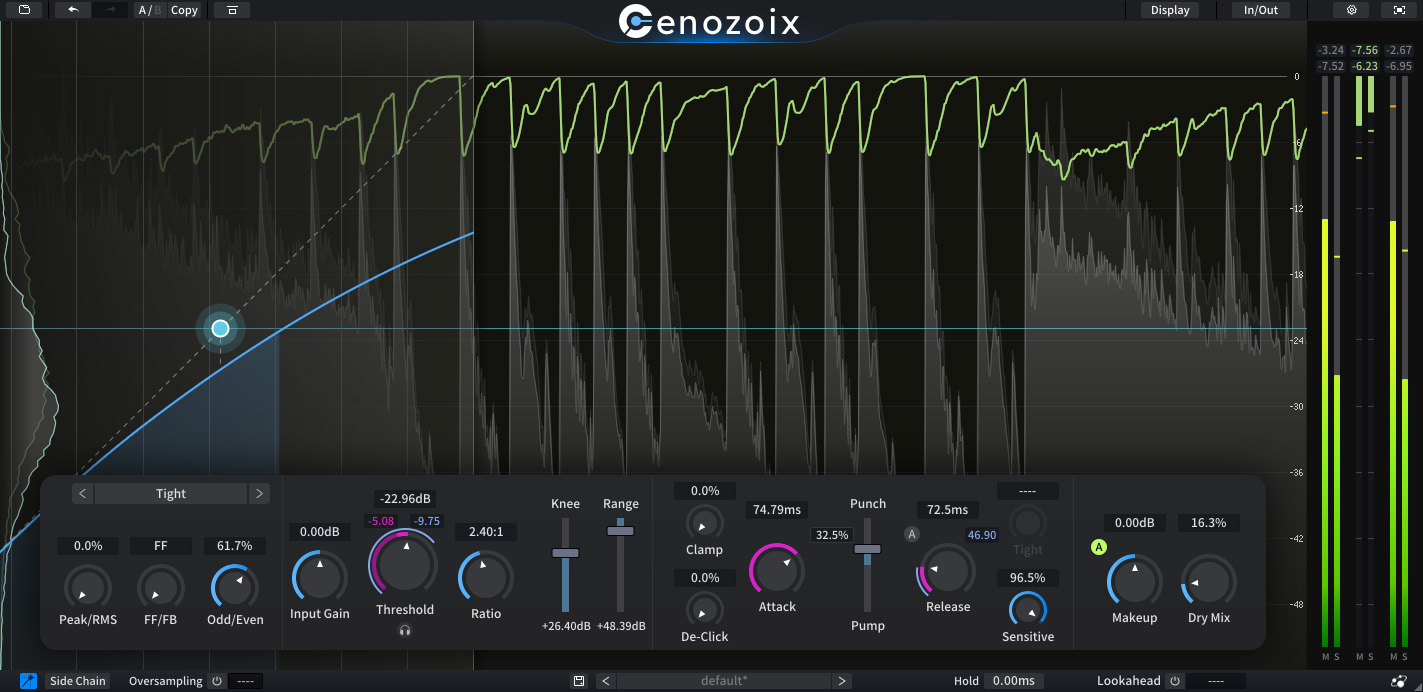
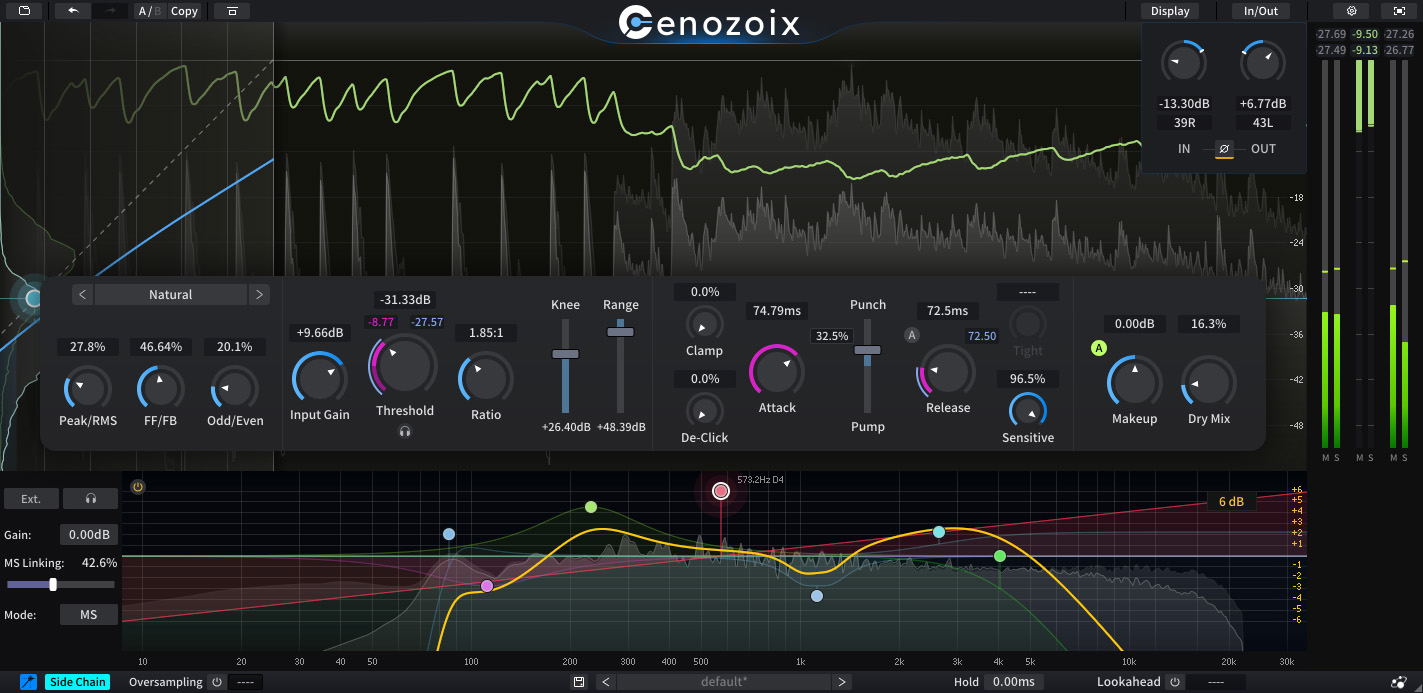
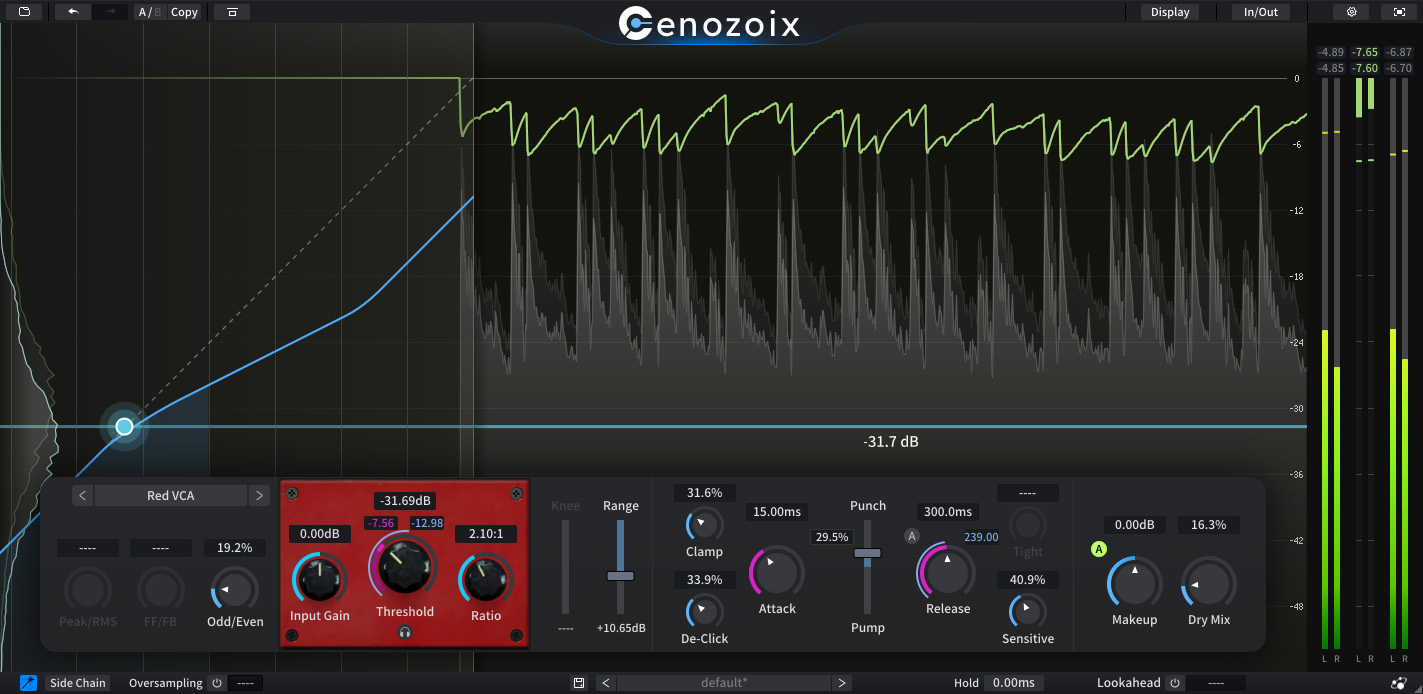

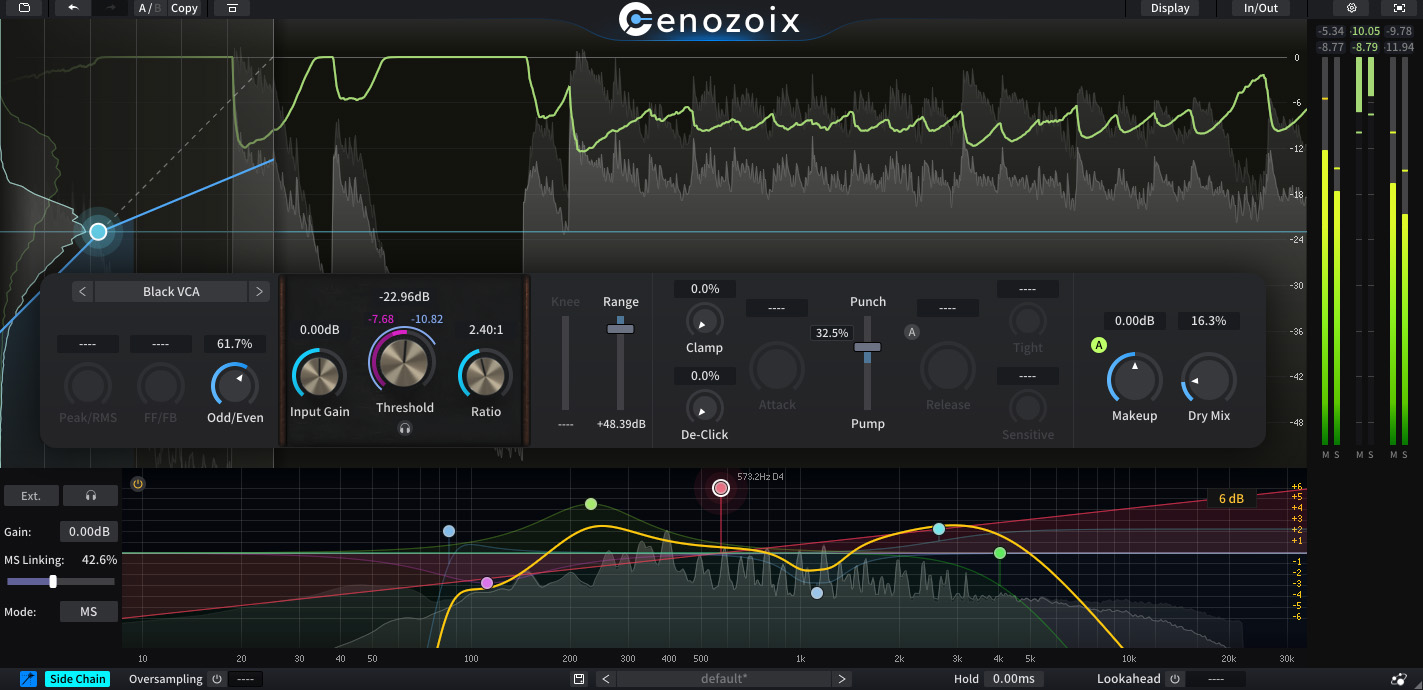
Cenozoix Compressor is the definitive all-terrain compressor plugin, delivering unparalleled sound quality and adaptability that will elevate your audio projects to their fullest potential. Each of its 24 meticulously crafted vintage & modern compressor styles supports precise customization to match with your distinctive sonic signature. Engineered for the future, Cenozoix is poised to redefine the landscape of compressor plugins.
Cenozoix Compressor delivers:
- Transparent sound quality powered by ADAA & adaptive anti-aliasing techniques
- 12 vintage model simulations + 12 modern compressor styles bring you the best of both worlds
- 24 styles of freely matchable & adjustable extra harmonic distortions that help you customize your variable and distinctive sound
- Flexible attack controls enable precise shaping of transients according to your imagination
- Advanced release controls that break the boundary between analog naturalness and smart adaptive modulation
- Abilities to define your distinctive compressor style with Peak/RMS, Feed-forward/Feedback customizations & Odd/Even-order harmonic controls
- Advanced parameters, intuitive controls, user-defined behaviors, customizable GUI, and more to discover
Introducing Cenozoix Compressor, and welcome to the dawn of the new era of dynamic controls.
Ultimate Sound Quality
as always!
In any digital compressor pursuing pristine sound quality, regardless of being styled vintage or modern, substantial aliasing is THE most challenging enemy.
Aliasing is an error signal in a high frequency’s spectrum, generated when the frequency of a signal goes beyond the maximum frequency that the current sample rate could support.
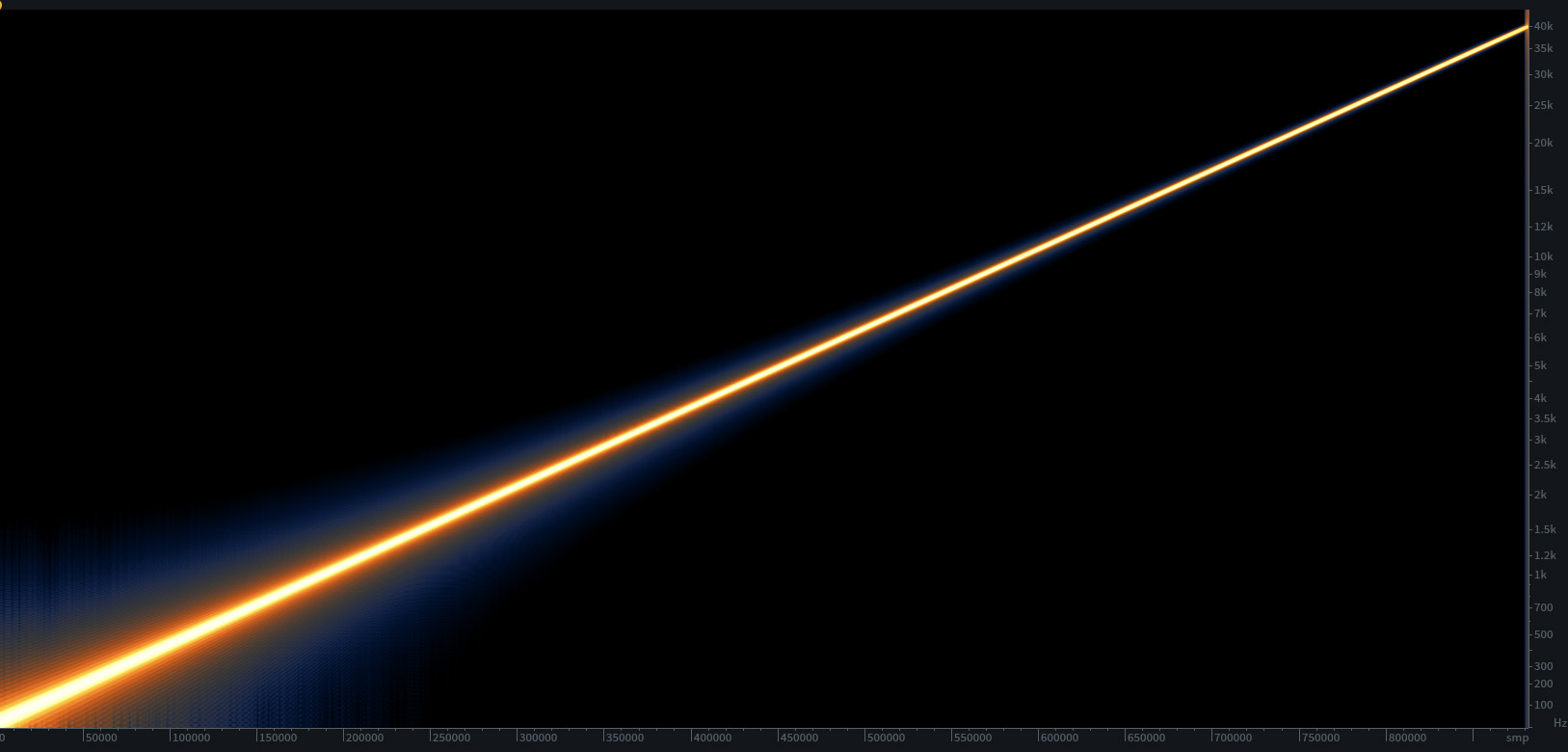
Spectrum of a 20–40 kHz sine sweep signal at 88200 Hz sample rate.
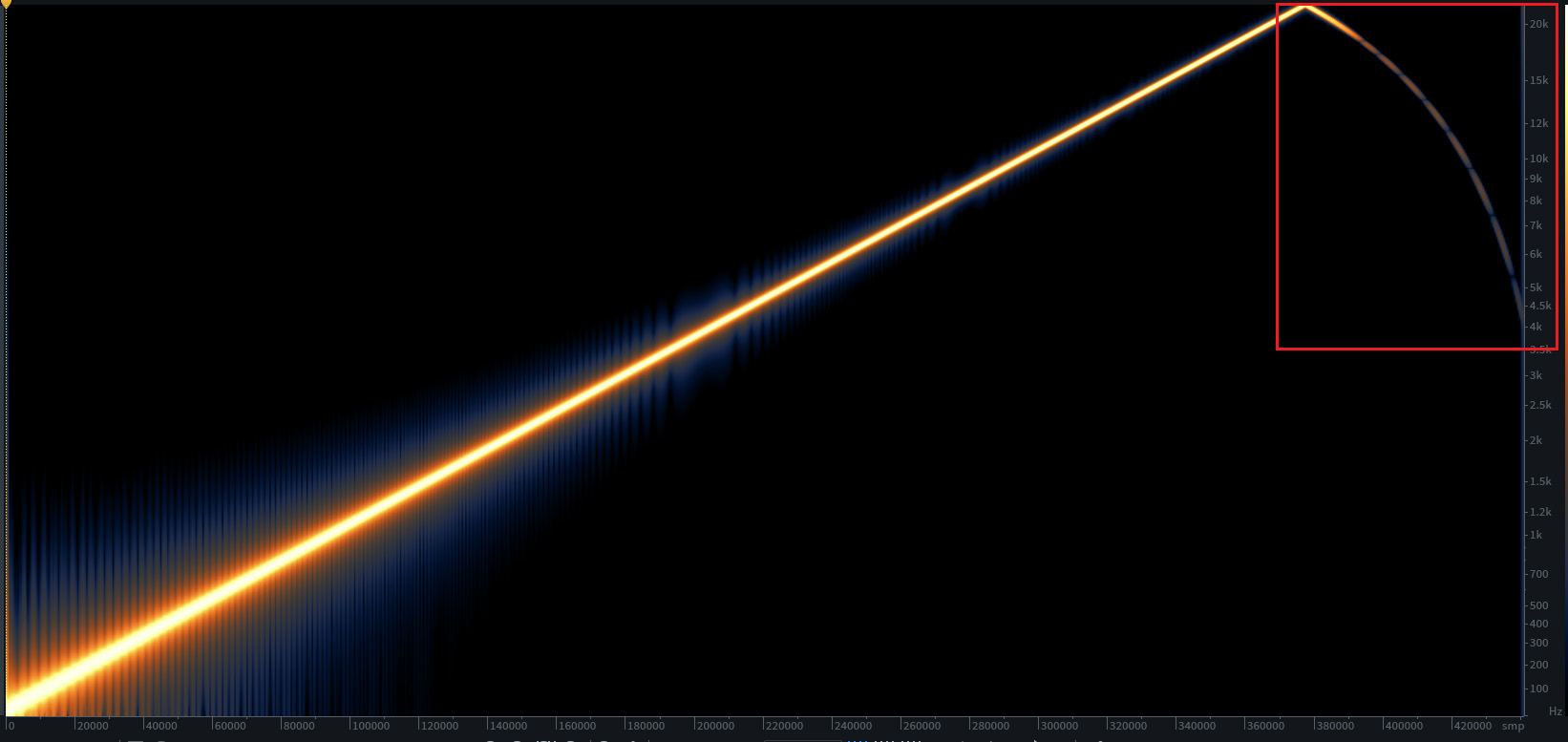
Spectrum of a 20–40 kHz sine sweep signal at 44100 Hz sample rate. The signal over 22050 Hz was ‘mirrored’ to lower frequencies.
Apparently, the ‘mirrored’ signal is ‘artificial’ and unnatural in both its look and sound. This is a distortion that only exists in the digital world, and one of the biggest reasons why many digital compressors do not sound as good as analog ones do.
Compressor is an effect that generates excessive high frequency harmonics. Therefore, aliasing suppression in Cenozoix Compressor becomes the first priority as we pursue our eternal mission one: sound quality.
ADAA - Anti-Derivative Anti-Aliasing
Anti-derivative anti-aliasing is a method to reduce aliasing artifacts in nonlinear audio processing without the use of oversampling. It transfers discrete sampling points into continuous signals, which provides the system an unlimited sample rate that remarkably reduces aliasing. The technique was initially invented by Native Instruments,[1] and was then gradually utilized in a number of waveshapers in the following years.
Now ADAA made its debut in a compressor!
You might be curious about how a technique for waveshapers could work in a compressor. There is a very important component in compressors: the rectifier, which is the heart of envelope detectors. Each rectifier works as a waveshaper in the compressor's algorithm. Applied with ADAA, all the rectifiers in Cenozoix comes with significantly suppressed aliasing and digital distortion.
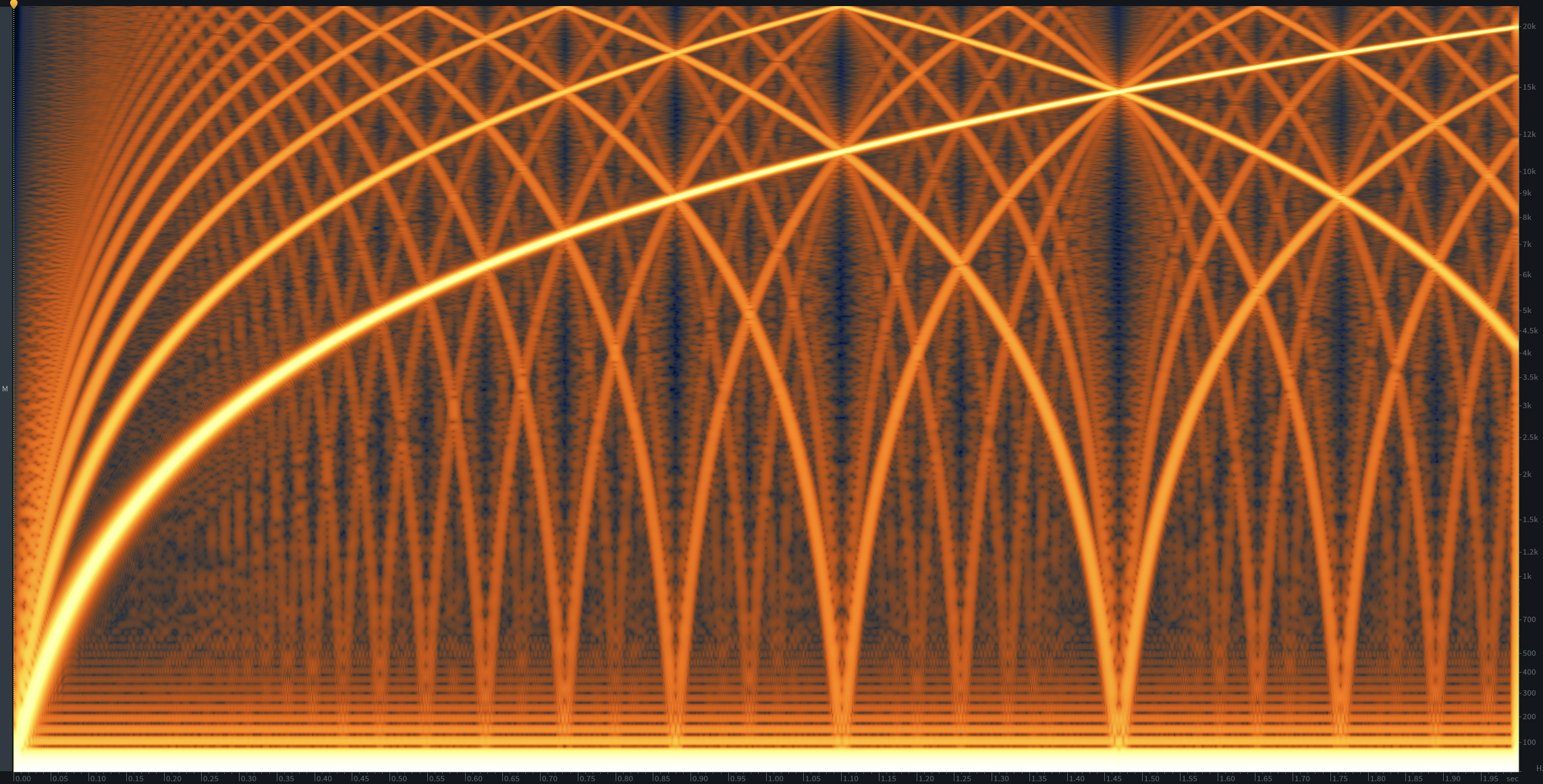
A sine sweep signal processed with the envelope detector in a regular compressor.
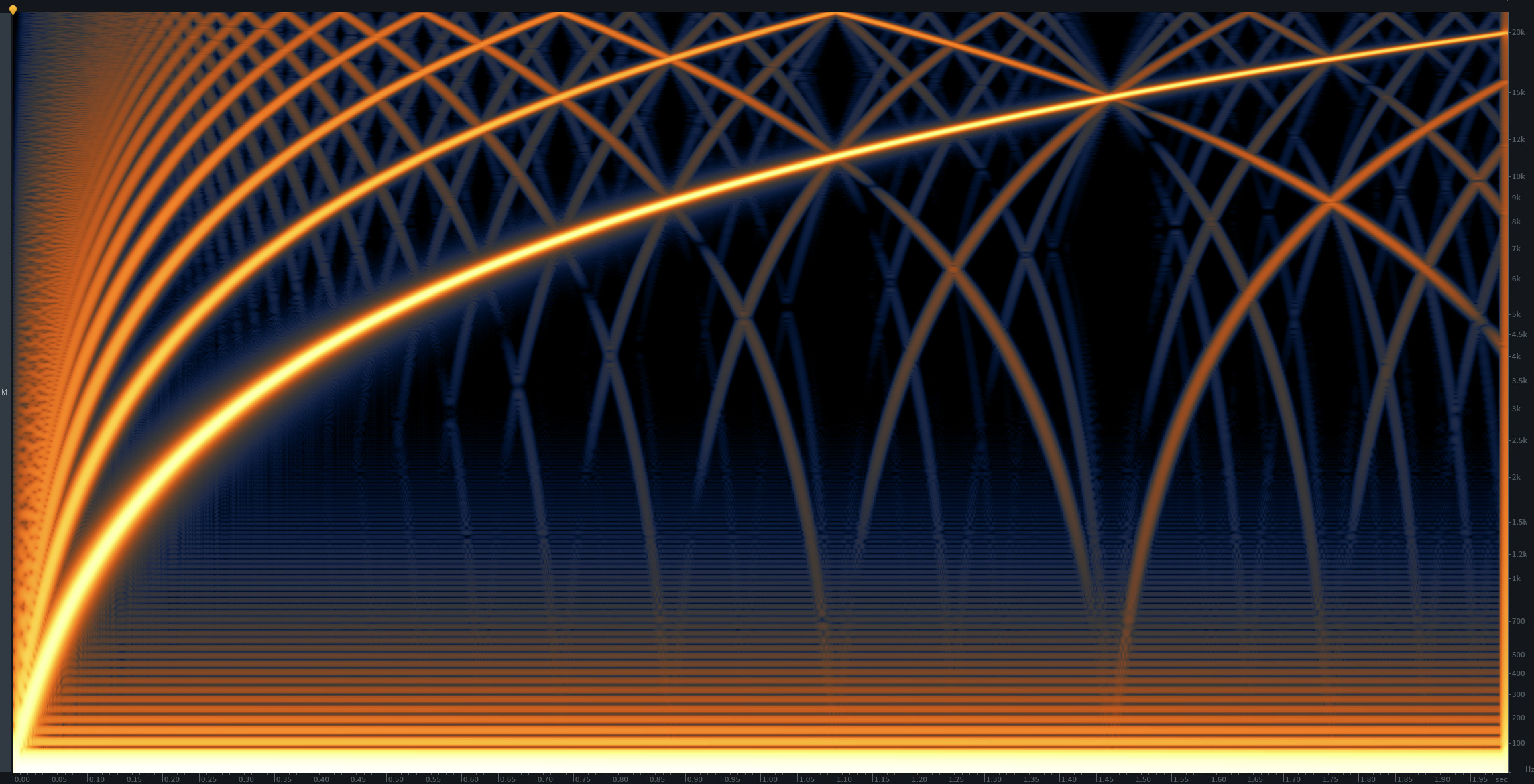
The same sine sweep signal processed with the envelope detector in Cenozoix.
Adaptive Oversampling Interpolation Envelope Detection
Now ADAA has solved substantial aliasing at high frequency, but it only works on the rectifiers. The attack/release stage is another factor that brings a huge amount of aliasing at high frequency. Each attack/release switch brings a sharp turn to the gain reduction curve. The only way to smooth them out is to process the signal at an extremely high sample rate. Theoretically, to completely avoid audible aliasing, a digital compressor needs to work in at least 32x oversampling, which would be a torture to CPUs.
To deal with this issue, we have developed the Adaptive Oversampling Interpolation technique. Cenozoix can turn on oversampling only when it is necessary, that is switching between attack/release, and operates at the original sample rate for the rest of time. This technique reduces as much aliasing as possible with reasonable computation cost.
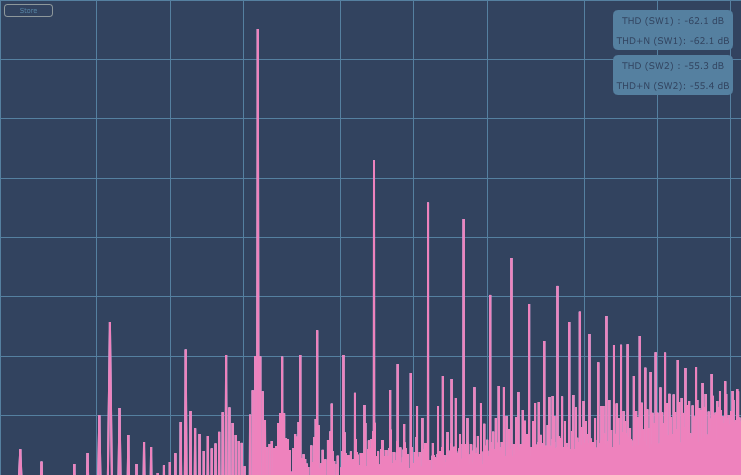
Harmonic distortions of a 300 Hz sine wave processed with a regular compressor.

Harmonic distortions of the 300 Hz sine wave processed with Cenozoix.
With an array of aliasing suppression solutions in Cenozoix, you can say goodbye to the plastic, glassy, and harsh textures in a digital compressor, and get your clean, transparent, and analog-feeling sound back.
24 Unique Compressor Styles

No compressor is one-size-fits-all, but rather, each offers its own unique style. Cenozoix commits to providing a diverse range of compressor styles, emphasizing extensive fine-tuning capabilities over claiming to be yet another 'best’. It is designed to uncover the secrets of how a compressor model shapes its sonic characteristics.
Cenozoix offers 24 compressor styles including 12 classic vintage styles and 12 meticulously crafted modern styles, each tailored to meet your diverse needs and preferences.
12 Vintage Styles

Some demos:
Brit VCA
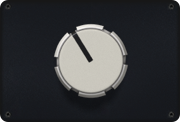
Dist. VCA

Black FET
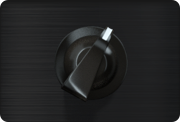
Diode-Bridge
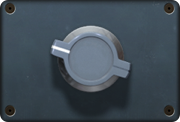
Virtual Mu

Vintage Tube
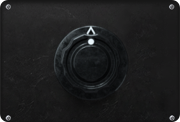
12 Modern Styles
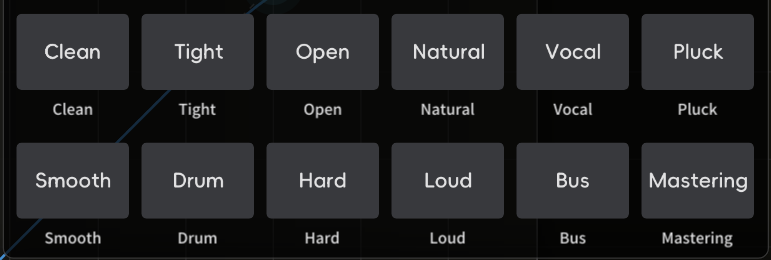
Some demos:






For more details on each compressor style, please refer to the User Manual.
Deconstructionism of Harmonic
Drive
In the real world, every circuit component produces harmonic distortions, even when the compressor is not processing compression at all.
In Cenozoix, not only the compression-caused harmonics were emulated, we also emulated the harmonics from the hardware itself. Each of the 12 vintage styles features the simulated harmonic distortions inspired by the real hardware model, while 12 drive styles specially designed for each modern style are also available.
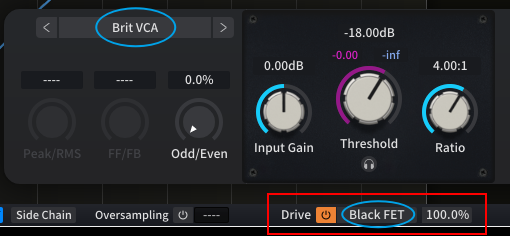
The extra harmonic distortions can be freely enabled with the adjustable range between 50% - 200%.
You can also mix and match a compressor style with a different drive style. For example, use 'Brit VCA' as your compressor style and match it with 'Black FET' as your drive style, customizing a variable and distinctive style of sound!
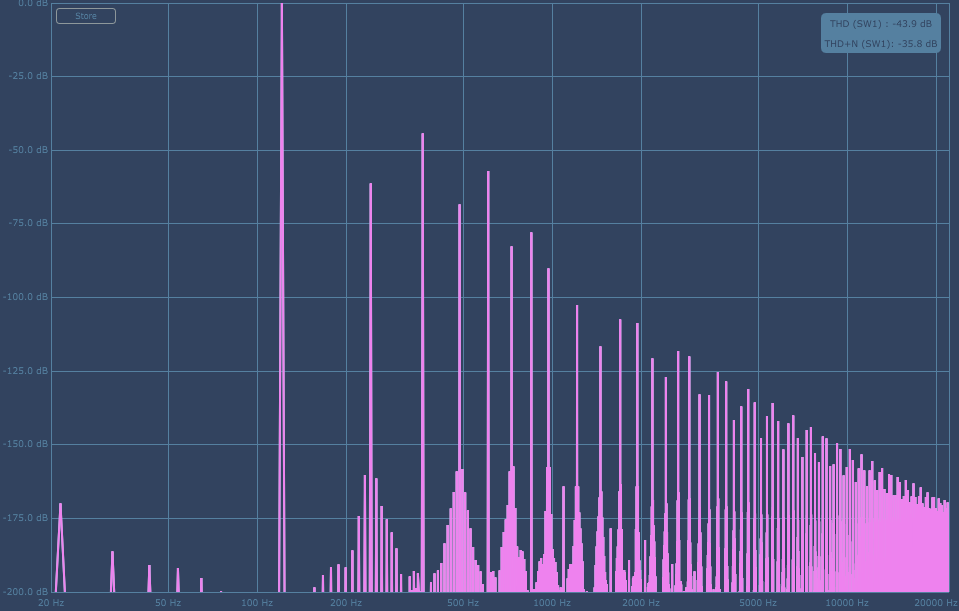
US VCA drive style
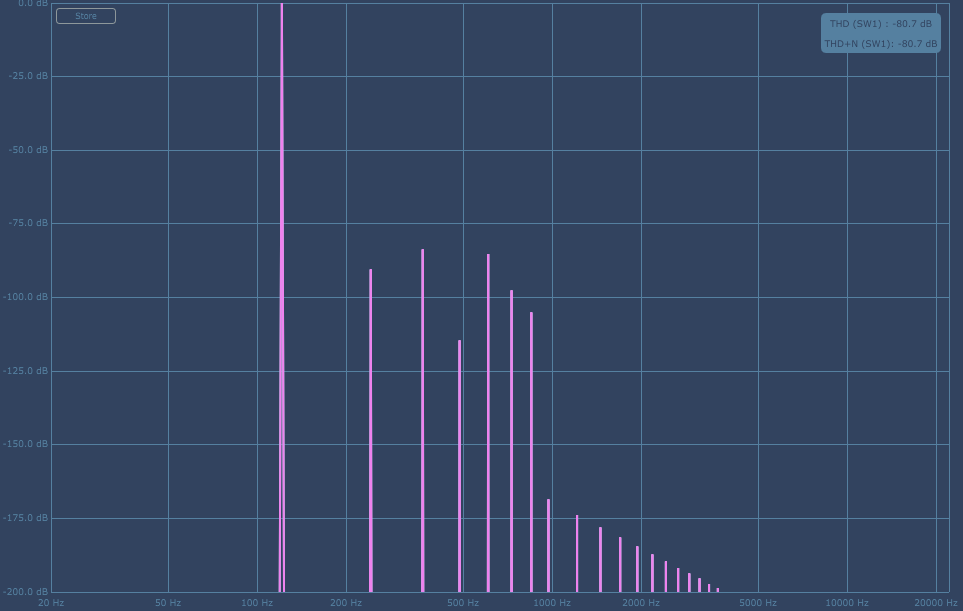
Vintage Tube drive style
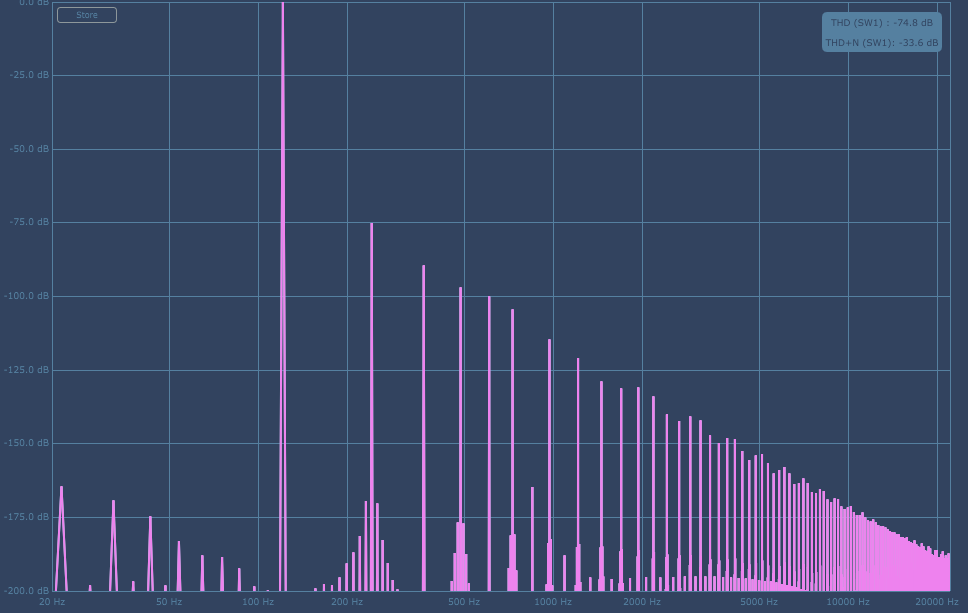
Clean drive style
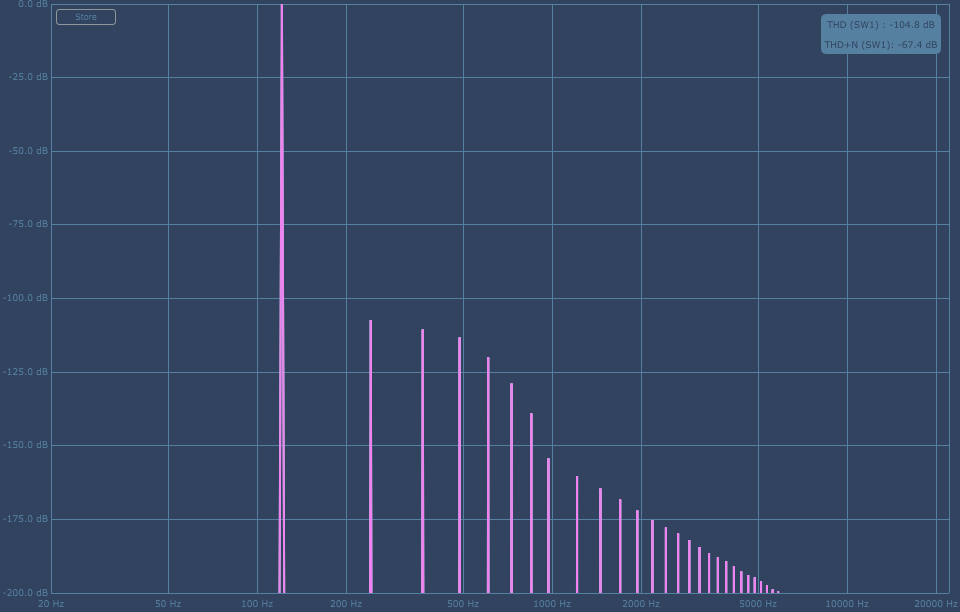
Natural drive style
Fine-tunings for Your Own Style
Peak/RMS
Generally speaking, Peak compression excels in capturing fast transients but introduces a stronger sense of compression. RMS compression brings a more natural sound with smooth attack and release, but may leak fast transients due to its slower response.
Cenozoix allows you to switch between pure Peak and RMS modes, or freely mix the advantages of both. Tweak that knob to the middle and Cenozoix will not only preserve the advantages of peak compression for your transient processing, but also achieve the smooth release characteristic of RMS compression.

Odd/Even Harmonic Adjustment
Theoretically speaking, regular compressors only generate odd-order harmonics, which make the audio harsh, sharp, and edgy. However, Cenozoix provides an option to artificially generate even-order harmonics, providing a warm and pleasant sound reminiscent of the analog tube compressors.
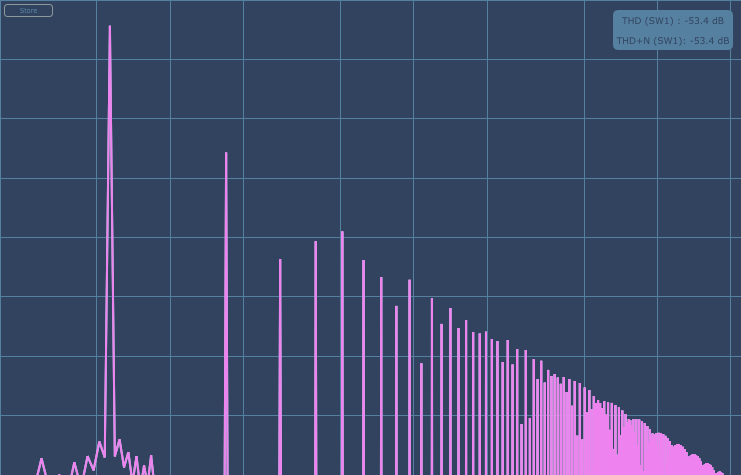
0% Odd/Even. Only odd-order harmonics are produced.
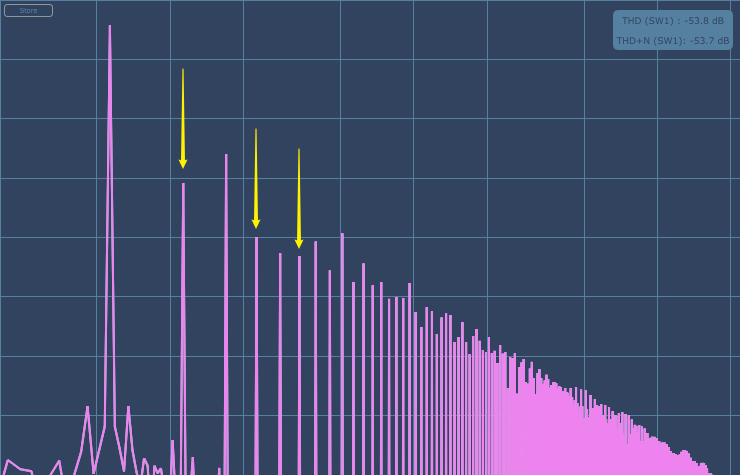
100% Odd/Even. Even-order harmonics are introduced.
Feed-forward/Feedback

As the primary mode in many mainstream compressors plugins, feed-forward compression can result in a more pronounced compressed effect on the target audio. Feedback compression, often found in classic compressors, can add a unique and unpredictable vintage flavor.
Again, Cenozoix implements both feed-forward and feedback-style compression, allowing you not only to switch between the two modes but also to blend them as desired.
Swiss Army Knife for Transients

What can we do when the transients do not sound as expected? Try another compressor and pray it is going to work?
Cenozoix offers more capabilities to shape transients than any other compressor does. It helps you ‘carve’ your transients like a sculptor.
Adjustable Clamp
We may all have experienced this problem when using compressors: Fast attack leads to an artificial sound, while slow attack leaves transients not fully compressed. Cenozoix’s Clamp function offers an adjustable parameter to ‘recompress’ the leaked transients.
How does it work? We can subtract the two envelopes before and after the attack/release is applied, and we will see what was overlooked. Simple trick, but it works!
Now tweak the Clamp knob to easily determine how much the leaked transients are expected to be ‘recompressed’.

Without Clamp, a long attack time may leave the transients not fully compressed. The red lines represent the threshold.
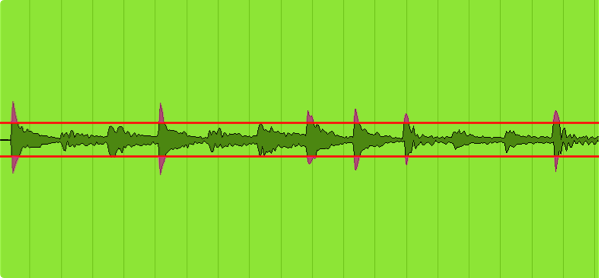
With 50% Clamp, the 'leaked' transients can be significantly recompressed.

With 100% Clamp, the 'leaked' transients get completely recompressed.
Adjustable De-Click
We all like hard compression, but not the ‘clicks’ that come with it. With a large gain reduction, even a very short attack time may still fail to compress super-fast transients, a.k.a. ‘clicks’.A simple ‘post-compression clipper’ can be used to reduce clicks, but Cenozoix’s adjustable De-Click parameter goes further. It detects the transients in real time to find the clicks, and sends them all to the specially designed overdrive effect, which transforms the amount of clicking transients into the amount of overdrive. As a result, the clicking sounds can be significantly reduced while keeping the power of the transients.
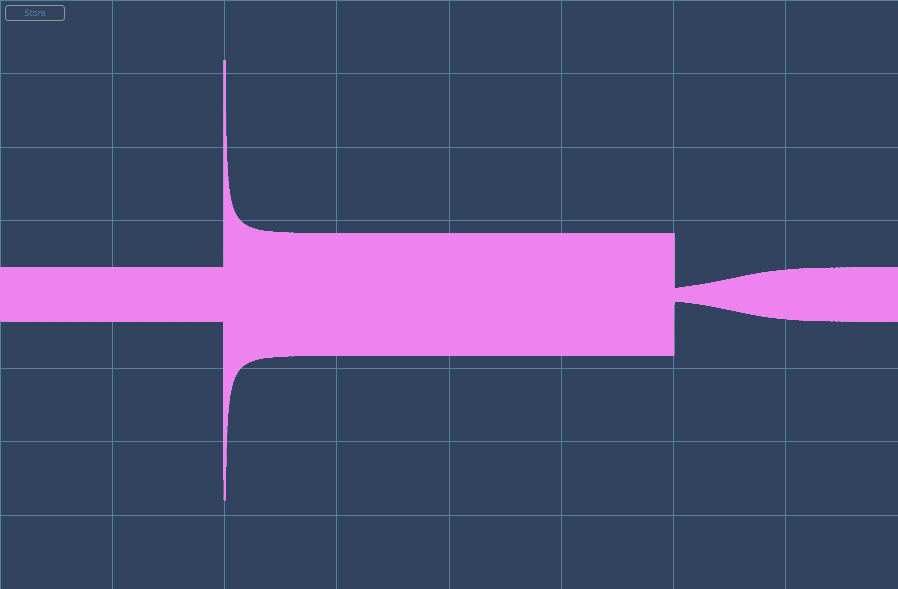
A super-fast transient / ‘click’.
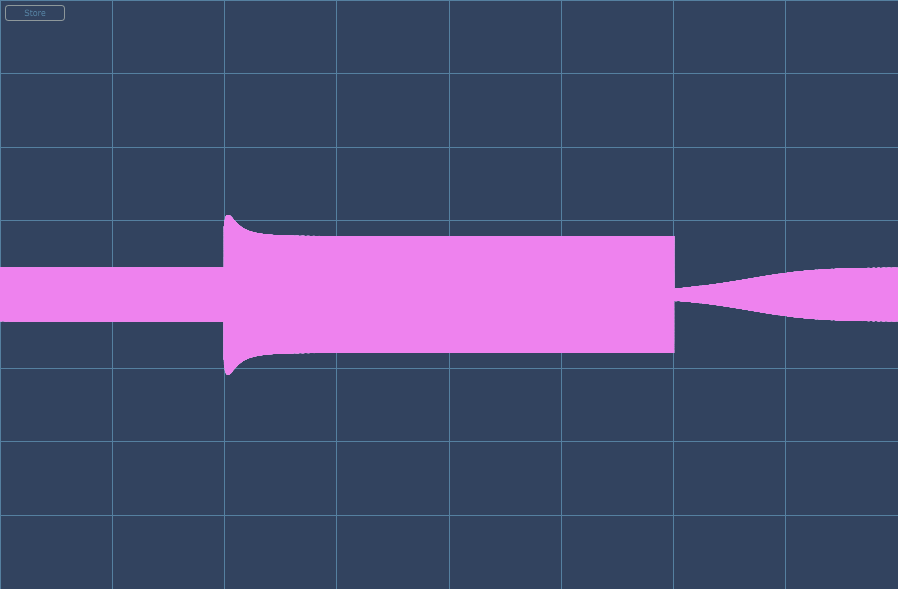
The ‘click’ being limited with maximum De-Click.

Punch/Pump
The shape that the attack stage takes makes a huge difference to the feeling of processed transients. When the shape is in a more linear form, the compressor will sound more straightforward and punchier. On the contrary, when bent into a concavity, the processed transient will produce the ‘pumping’ effect.
This is a little trick that every compressor plays inside to create its unique sonic characteristics. What if a compressor gives users the freedom to determine how it sounds? In Cenozoix, it can be done as easily as pushing a slider.
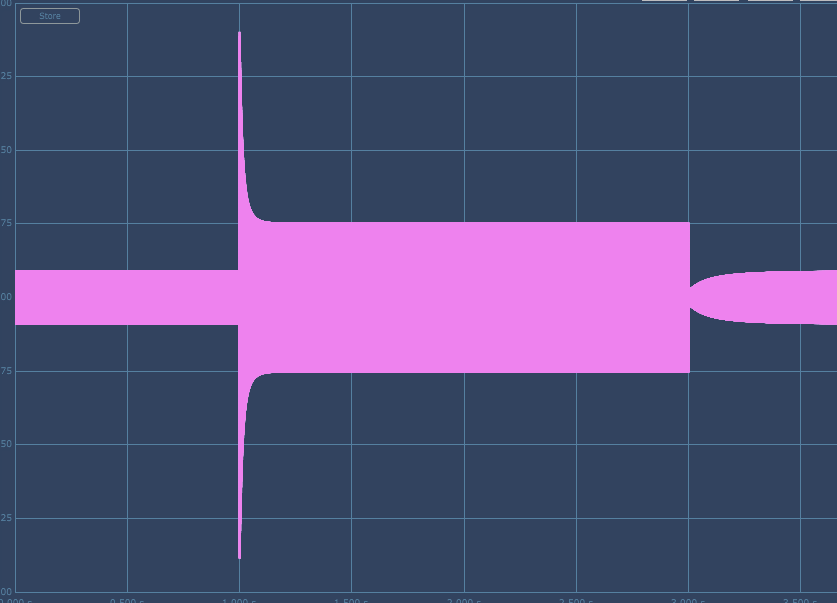
Punch/Pump 0%
Punch 100%
Pump 100%
Innovative Smart Release Controls
When compressing complex audio content, such as an entire mix containing vocals, drums, strings, bass, etc., it is nearly impossible to have a fixed release time that can be applied to them all.
To address this situation, Cenozoix implements an unique ‘Program Dependent Compressor’ (PDC) that automatically adjusts attack and release times by analyzing the current compressed audio content, including its dynamics and its proportion of high and low frequencies.
Each of the aforementioned 24 compressor styles has its own unique PDC settings in order to adapt to various content. In addition, 2 brand-new parameters are available to users for further PDC customization.
Sensitive
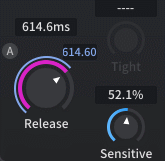
For small and fast transients, we typically would set a shorter release time. Conversely, for longer sustained sounds or when compressing the entire mix, we usually opt for a relatively longer release time.
Cenozoix provides a parameter called Sensitive, which functions as an adaptive release adjustment. When enabled, the release parameter will be automatically modulated to match different transients in the audio content. The larger the Sensitive ratio, the more aggressive the modulation. Sensitive takes over the release, so you don’t need to manually create automations for the parameter.
Tight
When processing low-frequency content, applying a slow attack/release may give it a natural vibe with slight distortion. With a fast attack/release, low-frequency transients will be suppressed, making the low-ends sound ‘tightened’.
Cenozoix realizes this perceptual concept into a tangible parameter. Turn the Tight knob to the right, Cenozoix will automatically shorten the attack and release times to respond faster to low-frequency content. The effect will then sound closer to a waveshaper than a compressor, since it brings more saturation and tightness into low frequencies.
Conversely, if we turn it to the left, the attack and release time for low frequency content will be extended. This will naturalize the low frequencies and reduce distortion, while losing some tightness.
Flexible Side Chain Controls

Side Chain Mode
Available to process in variable stereo modes including Left/Right, Mid/Side, Mid Only, Side Only, Mid->Side and Side->Mid.
Stereo Linking/MS Linking
In Left/Right or Mid/Side mode, the extent to link between the channels can be adjusted. Available to process from 100% stereo linked compression to 100% dual mono compression.

Side Chain EQ

8-band parametric side chain EQ featuring handy controls and extreme customizability introduced by the well acclaimed Kirchhoff-EQ.
More Features

Switchable oversampling: 2x, 4x, 8x, 16x
Side chain monitoring
Gain Reduction displays & monitoring
External side chain
Lookahead
Hold
Knee
Range
Makeup & Auto Makeup
Switchable Pre / Post-Makeup Dry Mix
Phase invert
Smart Auto Release
- Waveform display
- Threshold curve display
- Input / output / gain reduction level meters
- 50+ Presets
- Compact mode
- Preset selector
- Undo/Redo
- A/B switching
- User-defined default settings
- Customizable behavior settings & knob speeds
- Theme customization
- Resizable GUI
- Full-screen mode
- Extreme CPU optimization
- GPU accelerated GUI
- Apple silicon native support
- MacOS Retina / Windows high-DPI support
Latency
- Default: 4 sample points, about 0.1ms at 44100 Hz
- 2x Oversampling: 146 sample points, about 3.3ms at 44100 Hz
- 4x Oversampling: 217 sample points, about 4.9ms at 44100 Hz
- 8x Oversampling: 253 sample points, about 5.7ms at 44100 Hz
- 16x Oversampling: 271 sample points, about 6.1ms at 44100 Hz
Minimum System Requirements
|
Supported Plugin Formats
|
|
Download & Trial Installer for Windows (v1.1.0) Activating Cenozoix Compressor requires you to have a account. If you don't have one, SIGN UP HERE. After installing Cenozoix and logged in with your Plugin Alliance account, you can choose to start a 14-day free trial. A trial license is fully-functional, so you can enjoy all the features of Cenozoix. It will be active for 14 days after the first activation. If you are satisfied with the trial, and would like to support us, please come back to Three-Body Tech to get a full license! Read Activation Manual. |
|
|
User Manual
Click to download |
|
|
Version 1.1.0 (Apr 19, 2024) - Implemented "Drive" modelling: Extra harmonic distortions for each of 24 vintage and modern compressor styles with adjustable drive levels. Enables you to mix and match a compressor style with a different drive style. - Implemented "Post-Makeup Dry Mix" that allows to mix dry and wet signals after makeup processing. - Implemented compact mode with hidden waveform and threshold panels. Version 1.0.1 (Feb 21, 2024) Bug Fixes - Oversampling now works correctly. Fixed the issue that some internal DSP codes remain at the original sample rate instead of being initialized to a higher sample rate when oversampling is enabled, which may cause the missing low end. - Fixed an issue with latency compensation which causes phase issues when mixing dry and wet signals. - Undo in Logic now works correctly. - Fixed the incorrect display of Hold parameter when reopening the GUI. - Now knob fine tuning with Shift works correctly on macOS. Optimizations - New oversampling IR kernel that improves the sound quality while slightly increasing the latency. - Now supports the gain reduction meter display in Studio One. Version 1.0.0 (Feb 6, 2024) - Initial Release |
|
List Price: $224
Now $139.99
14-day Free Trial